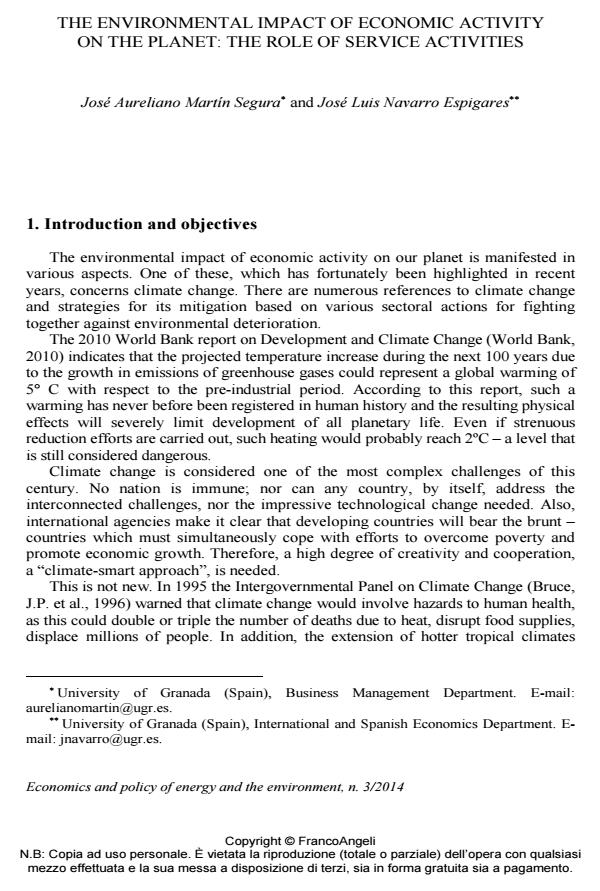The environmental impact of economic activity on the planet: the role of service activities
Journal title ECONOMICS AND POLICY OF ENERGY AND THE ENVIRONMENT
Author/s José Aureliano Martìn Segura, Espigares José Luis Navarro
Publishing Year 2015 Issue 2014/3
Language English Pages 26 P. 53-78 File size 2534 KB
DOI 10.3280/EFE2014-003004
DOI is like a bar code for intellectual property: to have more infomation
click here
Below, you can see the article first page
If you want to buy this article in PDF format, you can do it, following the instructions to buy download credits

FrancoAngeli is member of Publishers International Linking Association, Inc (PILA), a not-for-profit association which run the CrossRef service enabling links to and from online scholarly content.
In these times when The United Nations organization is discussing the post-2015 agenda, this paper provides an updated quantification of the environmental impact index and its evolution during the last fifty years. Based on the theoretical model of consumption equations initiated by Paul Ehrlich and John Holdren in the seventies, an updated and global environmental impact index estimate was carried out. The geographic scope of the study included all countries for which data are published in the database of the World Bank for the period 1961-2012. Once it was noted the growing evolution of this index, the secondary objectives of the study were focused on the analysis of the relationship between the calculated impact index and two variables. The first variable is linked to one of the main consequences of environmental degradation, the health of the population - estimated by the mortality rate. The second variable is linked to one of the main proposals to mitigate the environmental impact solutions, green investments - estimated by the volume of investment in R&D. These relationships have been studied by two separate econometric panel data models, and the results showed in both a positive and statistically significant relationship of impact index on mortality and investments in R&D. Finally, policy recommendations steer action towards green investments and the practice of business models based on social responsibility.
Keywords: Environmental impact, mortality rates, green investments
Jel codes: Q510, I130, Q550
José Aureliano Martìn Segura, Espigares José Luis Navarro, The environmental impact of economic activity on the planet: the role of service activities in "ECONOMICS AND POLICY OF ENERGY AND THE ENVIRONMENT" 3/2014, pp 53-78, DOI: 10.3280/EFE2014-003004